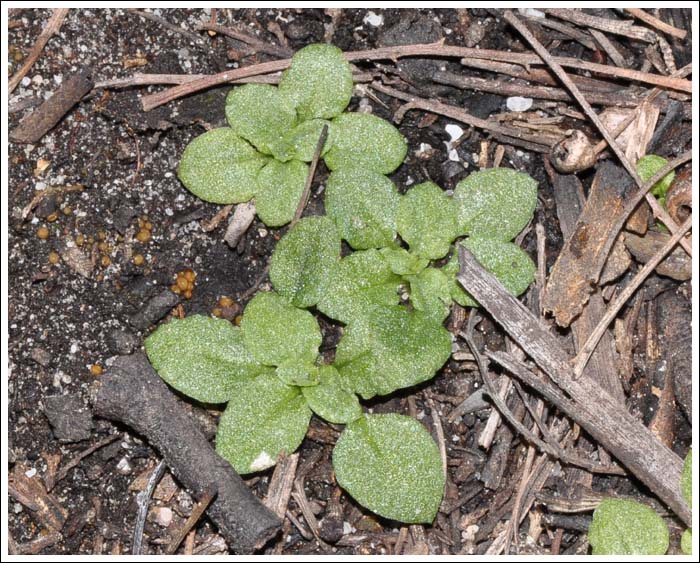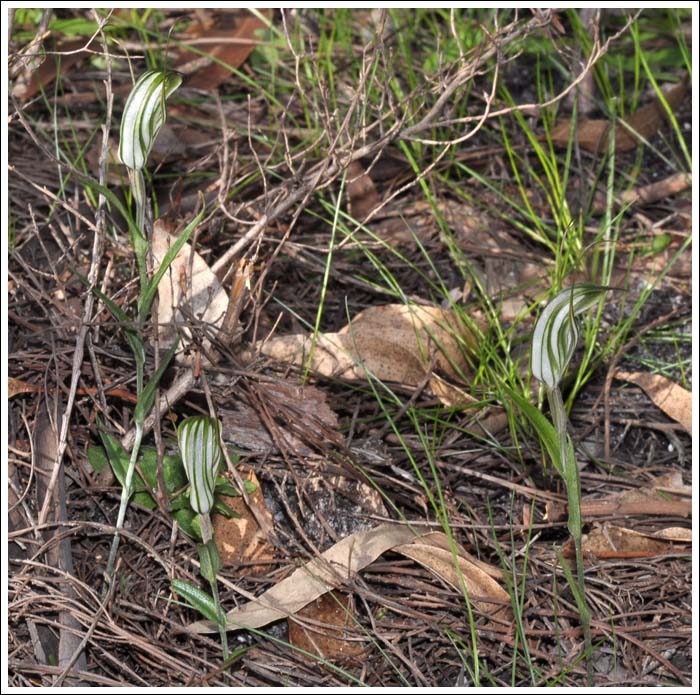
The flower spikes of the grass-tree are an important food resource for birds and insects.
On one spike ants and the odd hoverfly were busy, the latter though eluded the camera.

On one boundary of the park there is an area rich in terrestrial orchids. It had been burnt, but not as fiercely, bordering farmland it is possible that it had been a back burn to protect the farm. Orchid leaves were easy to find on the bare ground,
Greenhoods, Pterostylis sp.

Small Gnat Orchid, Cyrtostylis reniformis.

Waxlip Orchid, Glossodia major.

At this location Pterostylis striata and Pterostylis concinna grow together, and the named hybrid P. xToveyana also occurs. We found a good number of striata flowers, but concinna was just coming into bud, striata flowers from April to August, concinna from May to October. They are pollinated by fungus gnats, that, with other orchid pollinators are severely impacted by burning of the bush, causing a lack of pollination, diminution of seed, and the consequent fading away of orchid populations.
Pterostylis striata.

Many species of orchid are found living happily in the shelter of a log or tree, this tree for example was very much to the liking of striata. Click to enlarge.
References and further reading,
Orchid Pollinators of Victoria, Rudie H Kuiter
Wild Orchids of Victoria, Jeanes and Backhouse


